Kiana Honarmand: An Iranian Woman’s Journey Shown Through Art
Kiana Honarmand poses for a portrait with her artwork at her studio in Palo Alto, Calif., on Nov. 4, 2021. Honarmand’s artwork uses colors, shapes and patterns that remind her of growing up in Iran. (Nicolas Cholula / Xpress Magazine)
Kiana Honarmand places a wearable sculpture on her head. The black laser-cut felt covers her eyes, leaving the viewer with only glimpses of her face.
“The title for the series is called ‘Wearing My Burden,’” she says. “They are sculptural forms that are made to be worn. When I wear them, they block my view, limit how I can move and at the same time, I can use them as a place to hide.”
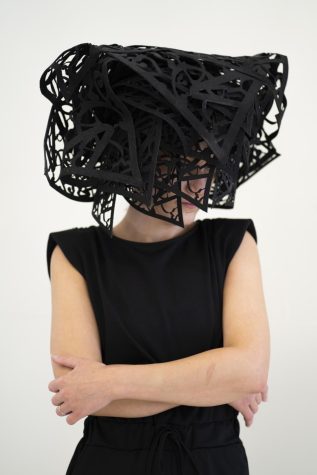
Honarmand, 33, left her home country of Iran nine years ago to pursue a master’s degree in Fine Arts from Pennsylvania State University.
Since then, she and her husband Pooya, who met as teenagers in Iran, moved to Mountain View, California for job opportunities. Honarmand uses her artwork to represent issues such as Iranian women’s rights, surveillance, censorship and immigration.
“‘Wearing My Burden’ is about the different labels and baggage that come with living in this forgotten or rejected Middle Eastern body,” she says. “Being an Iranian woman, growing up in Iran, there are just so many limitations that we have to deal with.”
Unlike women in Iran, Honarmand is no longer required to cover herself, including her hair.
Mitra Ara, an associate professor and founding director of the Persian Studies Program in the department of Modern Languages and Literatures and the Middle East Studies Program at San Francisco State University, says that by law, Iranian women and young girls are required to cover themselves from “head to toe” when in public.
“The current Iranian government began enforcing re-Islamization of the nation, and that included the legal, cultural, physical and occupational gender segregation, along with the eradication of the existing women’s rights,” she says.
Ara also states that “the ‘Islamic Republic,’ established in 1979, is the first form of the theocratic government in the millennia-old history of Iran.”
“It was basically the reversal of the previous rights, prior to the formation of the current government,” says Ara. “Women in Iran had the freedom to choose their own public attire, choose any field of education and profession, travel without a written permission or chaperon of a male relative and (they) had reproductive rights.”
Angélica Turner, who lives in San Francisco, has known Honarmand since 2019 when they met at a local nonprofit art studio called Root Division. The two became quick friends and continue to inspire one another through their artwork.
She describes Honarmand as a kind, proactive, honest and authentic person.
“Kiana is able to address some very powerful things that are happening in Iran without victimizing herself,” says Turner.
Turner says that her favorite work of art is when Honarmand recorded herself sewing with a long red piece of thread to mend holes in her shirt.
“The gesture is very sensible,” Turner says. “It makes you feel that she’s almost sewing something inside her. It’s more than just clothes; it’s like she’s sewing her guts or heart.”
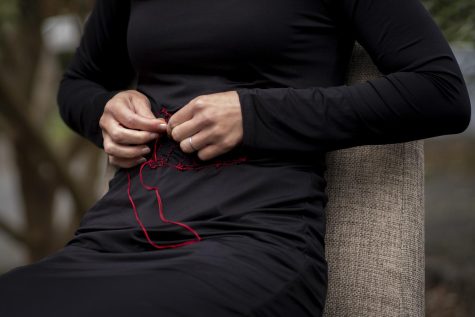
Honarmand began studying mathematics and physics in high school when she lived in Iran, but she soon realized that her passion lies within art. After enrolling at Penn State, she fell in love with photography.
“My approach became more conceptually driven. I started doing sculpture and mixed media,” Honarmand says. “I get my inspiration from everyone around me that I see, other artists from Root Division.”
Phi Tran from Oakland, California oversees the design and marketing at Root Division. She describes Honarmand as a selfless and thoughtful person. Tran also loves her sewing performance, describing it as subtle and calming.
“Kiana has impacted my work at Root Division more so than any other artist in the program. She often reaches out to offer help in any way she can — basically constantly,” Tran says. “We’re an organization that’s framed to celebrate and validate volunteer work and community connections. She just embodies that so well.”
Another concept that Honarmand expresses throughout her work is censorship and surveillance in Iran.
“It’s a weight to carry knowing that you can’t say anything on the phone with your family. I’m sure that must be very heavy in her soul every day,” says Turner.
Ara states that security, surveillance and censorship within Iran is “governed and enforced” by the Supreme National Security Council, which is an entity created, funded and administered by the government.
“The surveillance and censorship include all forms of communications and media, including film and cinema, social platforms, newspapers, publications, textbooks, individual internet activities, individual personal and public events and so on,” says Ara.
Rachel Fawcett from State College, Pennsylvania has known Honarmand since 2014 when they met at Penn State. The two are close friends and visit each other whenever possible. Fawcett describes Honarmand as a kind and loyal person.
“She’s consistent. We text literally every day. I don’t have another friend that does that,” she says.
Fawcett also says that most people probably don’t know that Honarmand is “the ultimate hostess.” She says that Honarmand makes the most perfect-looking Persian dishes.
“We are very different humans in all senses. But we share a love for people and art, which is beautiful,” says Fawcett. “She’s very skilled at making all things beautiful.”
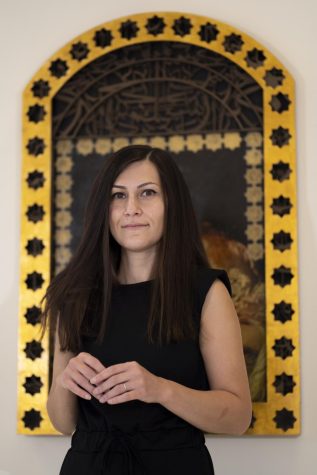
When the pandemic started in 2020, Honarmand also began to work on a series of videos that highlighted her viewpoints on immigration.
“Right in the beginning of COVID, I started to read a book called, ‘How to do Nothing,’ which has nothing to do with my art concept,” Honarmand says, smiling. “But there was a part where the author wrote that water is an immigrant and that really stuck with me.”
One video from her series consists of the pitter-patter of rain as it seeps into the ambient background music, while Honarmand cleanses her hands in a clear glass bowl full of water.
“Water, too, is an immigrant,” Honarmand says in the video. “Water witnessed all that has ever come to be before we had civilizations, breakouts, wars, people prospering, suffering, kindness, cruelty and injustices. Yet, it keeps giving life to all in its path.”
Honarmand’s newest work revolves around embracing what the new normal is during the pandemic. The pieces, combining images of her eyes along with photos of places she’s traveled to before, are on display at Kearny Street Workshop in San Francisco until November 14th.
Editor’s note: an earlier version of this article quoted Ara as saying “Islamic government,” which has since been updated to “Islamic Republic.”
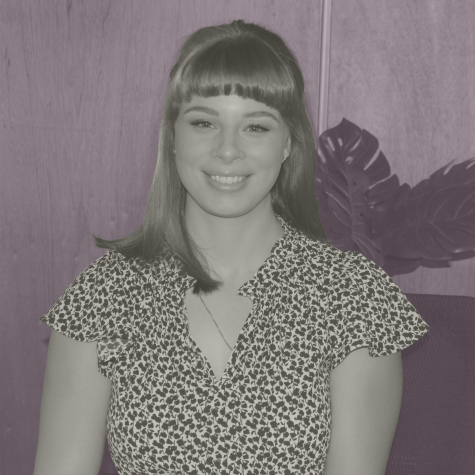
Hunter Troy, a San Francisco native, majors in print and online journalism with a minor in holistic health studies. She’s passionate about women’s...


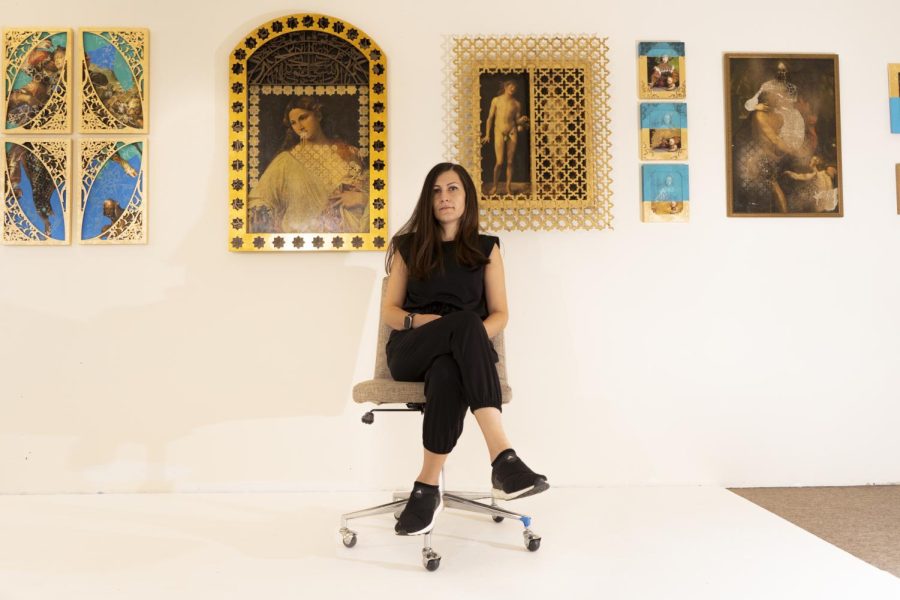
N. H. McCormick • Nov 13, 2021 at 8:25 am
I love this article! What an amazing artist Kiana Honardmand is. Through her powerful art work one can feel the fear and the sorrow, the ‘burden’ women of Iran must feel under the recent reinstatement of oppressive Islamic rules. How can generations of women, of an entire society be expected to revert back to an unknown way of living and in such restrictive ways. I can’t imagine how confusing these extreme cultural changes, rules and restrictions (certainly none of which our culture could grasp) must be. The poignancy of Honardmand’s art work conveys the dark and constant threat the women of Iran feel under such oppression. This well written article by Ms. Troy has prompted me to learn more about the history of Islam and Iran’s current humanitarian crisis. Thank you for the education.